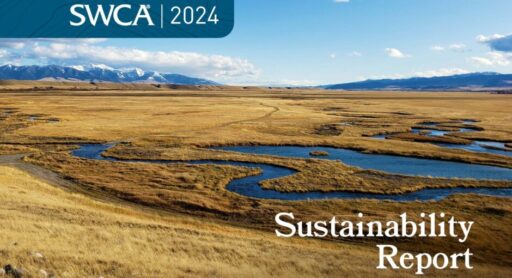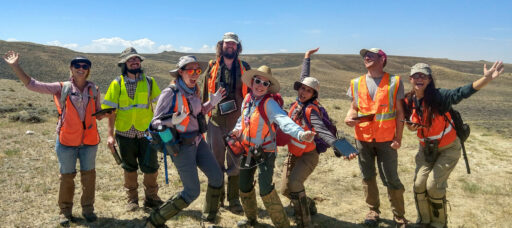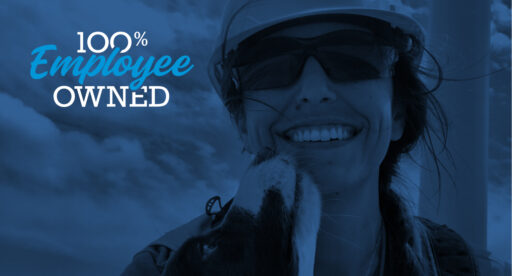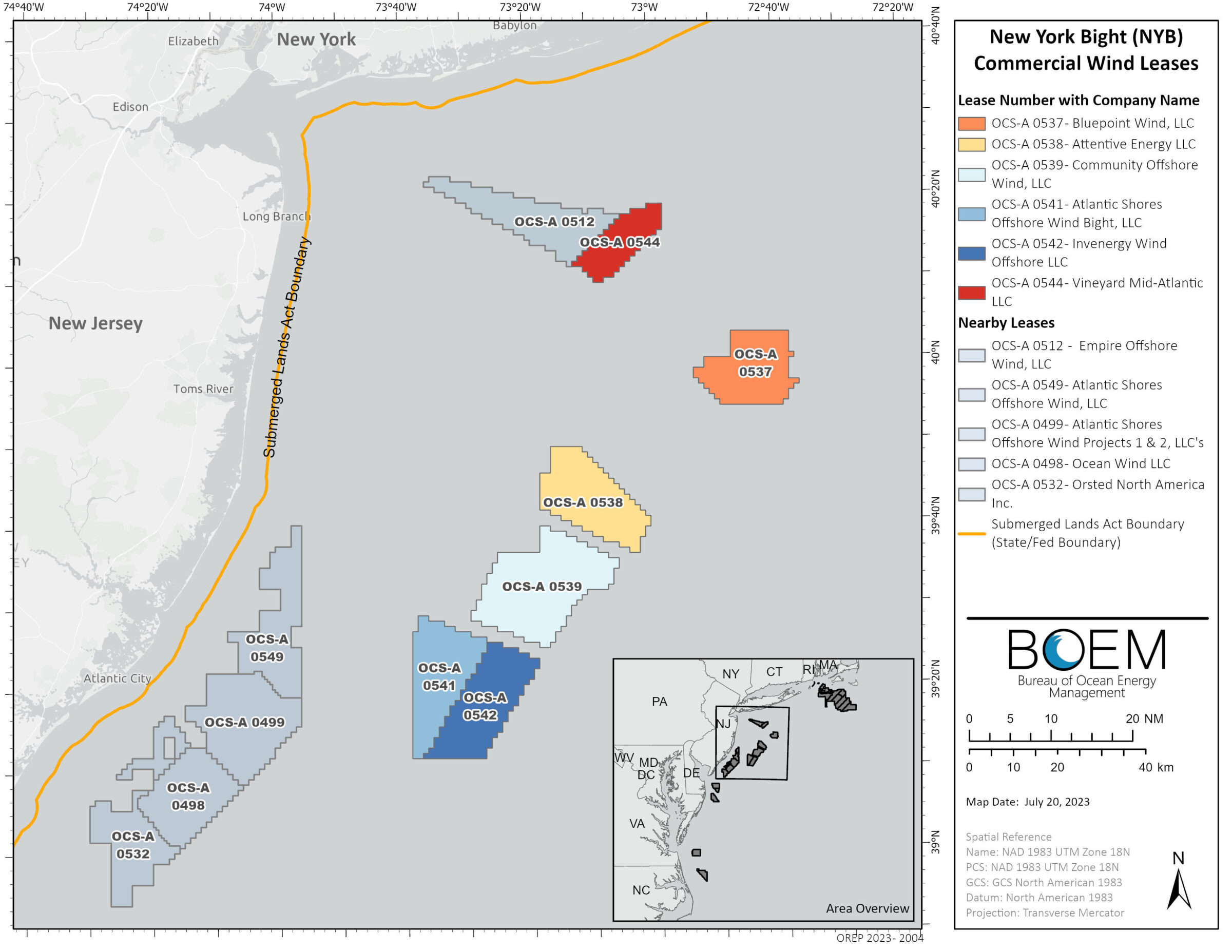2025
Comparably’s Best Company Outlook
* Providing engineering services in these locations through SWCA Environmental Consulting & Engineering, Inc., an affiliate of SWCA.

From the experts we hire, to the clients we partner with, our greatest opportunity for success lies in our ability to bring the best team together for every project.
That’s why:

At SWCA, sustainability means balancing humanity’s social, economic, and environmental needs to provide a healthy planet for future generations.

SWCA employs smart, talented, problem-solvers dedicated to our purpose of preserving natural and cultural resources for tomorrow while enabling projects that benefit people today.

At SWCA, you’re not just an employee. You’re an owner. Everyone you work with has a stake in your success, so your hard work pays off – for the clients, for the company, and for your retirement goals.
BOEM Releases Preliminary Environmental Analysis for Offshore Wind in New York Bight
Ross is a respected expert in infrastructure permitting with a decade of experience in project, program, and policy development, management, and implementation. His primary focus has been on streamlining and enhancing the transparency of permitting decisions across federal, state, tribal, and local governments while prioritizing public input and environmental resources.

Stephanie Hudgins serves as Vice President of Power and Energy at SWCA Environmental Consultants, bringing more than 24 years of experience in environmental consulting and permitting. She leads business development and strategic growth across SWCA’s Transmission, Generation, Oil & Gas, and Mining markets, supporting clients nationwide in delivering large-scale infrastructure projects. Stephanie plays a key role in shaping corporate strategy, optimizing cross-discipline collaboration, and driving integrated solutions that align with client goals and regulatory requirements.
Known for her relationship-driven approach, Stephanie works closely with clients, industry partners, and internal teams to identify growth opportunities and deliver value throughout the project lifecycle. Her technical background spans NEPA compliance, FERC licensing, Section 404 permitting, protected species consultations, and biological field studies. She has successfully managed multidisciplinary teams and complex permitting efforts across a wide range of industries, including renewables, natural gas transmission, water resources, and private development.
Stephanie is a trusted partner to corporate and utility clients navigating evolving regulatory landscapes. Her focus on execution, responsiveness, and collaboration ensures that clients receive thoughtful, strategic support from planning through construction.



On January 12, 2024, the Bureau of Ocean Energy Management (BOEM) released the Notice of Availability regarding the draft Programmatic Environmental Impact Statement (PEIS) concerning offshore wind energy development in the New York Bight (NY Bight), encompassing areas offshore New York and New Jersey. This marks the official commencement of a 45-day comment period on BOEM’s inaugural regional assessment of mitigation strategies for numerous offshore renewable energy lease zones.
BOEM plans to streamline environmental review processes for six lease areas (OCS-A 0537, 0538, 0539, 0541, 0542 and 0544) in the NY Bight by developing the PEIS, aiming to minimize redundancy in subsequent construction and operation plan (COP) reviews. This approach is expected to expedite decision-making by focusing future COP-specific analyses on project-specific impacts not covered in the PEIS. Each COP will undergo evaluation to determine the extent to which the PEIS can be referenced, with additional analysis conducted as needed.
While BOEM conducted a public scoping period from July 15 to August 30, 2022, receiving 43 comments from various stakeholders, the PEIS does not directly review or approve any offshore wind development activities.

BOEM prepared the draft PEIS for the NY Bight lease areas using a representative project design envelope (RPDE), which encompasses various parameters representing a hypothetical offshore wind project. This approach facilitates the analysis of potential impacts from any future projects in the region and enables tiering in subsequent COP-specific NEPA analyses (see Appendix C of the PEIS.) Additionally, the PEIS evaluates cumulative impacts from the development of all six lease areas, providing a comprehensive assessment of the region as a whole.
To create the RPDE, BOEM collaborated with stakeholders including NY Bight lessees, offshore wind developer associations, research institutions, and state governments, ensuring the inclusion of realistic parameters reflecting potential development scenarios. Parameters such as turbine number, foundation type, height, and cable lengths were considered, with a focus on assessing maximum-case scenarios to understand potential environmental impacts comprehensively. Notably, onshore component parameters were excluded from the RPDE due to jurisdictional constraints, with emphasis placed on offshore infrastructure configurations pending COP submissions. (see Appendix D of the PEIS.)
The draft PEIS outlines programmatic avoidance, mitigation, monitoring, and minimization (AMMM) measures proposed by BOEM as conditions for COP approval in the NY Bight, unless COP-specific NEPA analysis deems them unnecessary or ineffective. Upon issuing the record of decision (ROD) for the PEIS, BOEM will commit to adopting specific AMMM measures. The draft PEIS presents three alternatives:
The PEIS stands as a crucial initiative aimed at improving decision-making efficiency, particularly in light of delays observed in the permitting schedules for offshore wind projects already undergoing BOEM review. This updated regional strategy represents a progression in BOEM’s process, aimed at expediting decisions that promote offshore wind energy development, while concurrently protecting marine ecosystems, minimizing conflicts with other ocean activities, and preserving marine life.
Appendix G of the PEIS outlines the Alternative Mitigation Measures (AMMs) that BOEM is considering as potential conditions for COP approval. Some of these measures are unique for COP terms, while others fall outside BOEM’s jurisdiction. Stakeholders are encouraged to provide input on these proposed measures and their effectiveness in mitigating impacts. Specific feedback is sought on compensatory mitigation approaches, including proposals for financial contributions toward third-party managed funds addressing historic property and fishermen’s income loss.
BOEM will host three in-person and two virtual public meetings to gather feedback on the draft PEIS, with public comments accepted until February 26, 2024. The final PEIS is expected to be published in fall 2024.
Submit a public comment by February 26, 2024 at FederalRegister.gov
SWCA is ready to help our clients draft public comments in response to this Notice of Availability. Please reach out to any of our nationwide experts below or your current SWCA project manager to get started today.